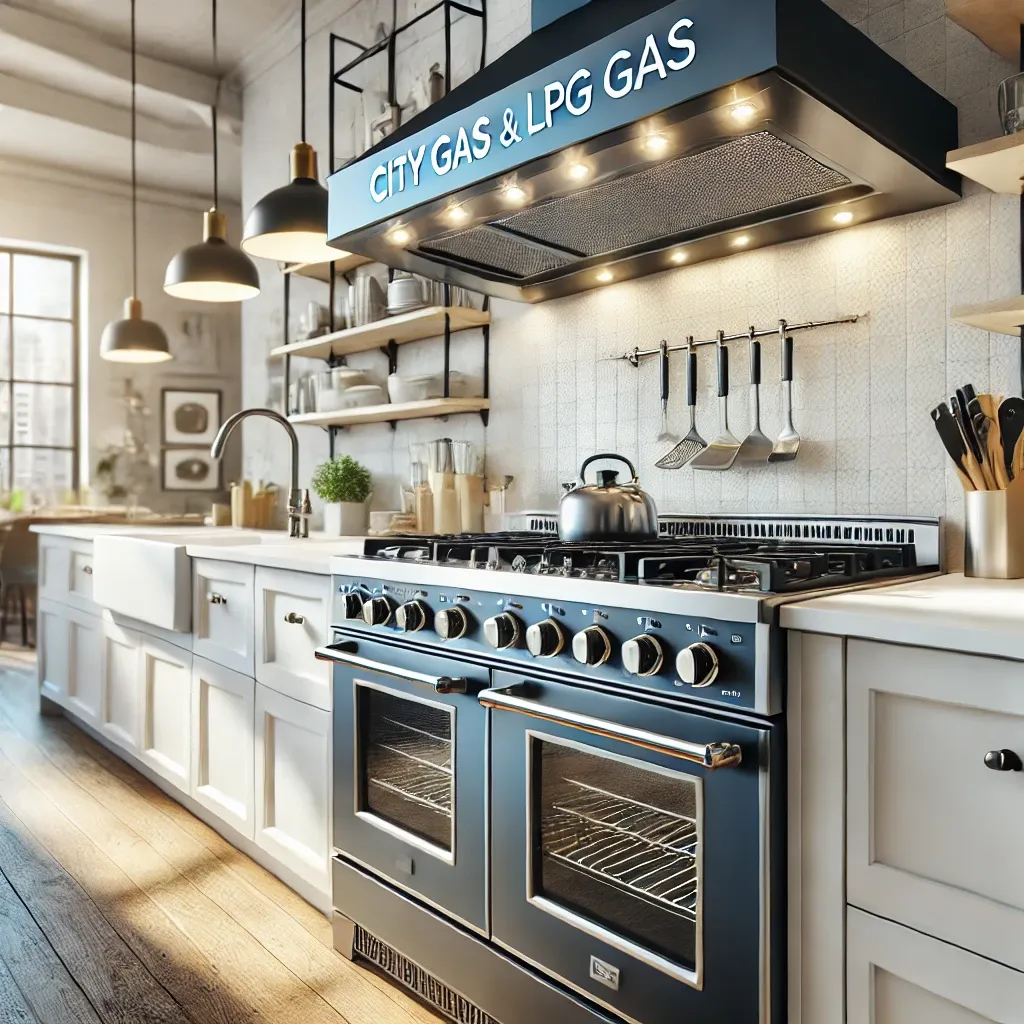A modern kitchen demands the best in functionality and efficiency. When it comes to cooking, your stove plays a crucial role in creating a convenient and energy-efficient environment. But with so many gas options available, how do you decide between City Gas and LPG? In this article, we’ll cover the differences between City Gas and LPG Gas, how to install them for your gas stove, and what to look for when choosing the best gas range for your needs.
City Gas Stove Installation: What You Need to Know
City Gas, also known as natural gas, is one of the most common energy sources used in homes and businesses. It is delivered to homes through a network of underground pipelines, providing a continuous and reliable energy source for appliances like stoves, water heaters, and more. Installing a City Gas stove is relatively straightforward, but there are important factors to consider to ensure a safe and effective setup.
Key Considerations for City Gas Stove Installation
-
Location of Gas Line The gas line must be located near your kitchen for easy access to your stove. If you’re moving into a home with an existing City Gas setup, this step is already taken care of. For new installations, a professional technician will need to extend the gas line to the desired location.
-
Proper Ventilation A City Gas stove must be installed in a well-ventilated area. Ensure that your kitchen has windows or a ventilation system to prevent the build-up of carbon monoxide.
-
Pressure Regulation City Gas typically has a lower pressure than LPG, so a pressure regulator is essential to ensure that the stove operates efficiently and safely.
-
Safety Features Consider stoves with automatic shut-off valves, flame failure devices, and gas leak detectors to ensure added safety in your home.
-
Professional Installation Always hire a certified gas installer to ensure the installation is up to code and follows all safety protocols. Gas leaks are hazardous, so expert installation is crucial.
Advantages of City Gas
-
Cost-Effective City Gas is often less expensive than LPG, especially in areas where it is supplied directly to homes.
-
Continuous Supply Since City Gas is piped directly to your home, you never have to worry about running out of gas, unlike LPG cylinders which require replacement.
-
Eco-Friendly City Gas is considered a cleaner energy source compared to LPG, as it produces fewer greenhouse gases during combustion.
City Gas and LPG Gas Stove: Understanding the Differences
When it comes to cooking, both City Gas and LPG Gas are popular choices for stove systems. However, each has its unique characteristics, benefits, and challenges. Understanding these differences can help you make an informed decision based on your specific needs.
Key Differences Between City Gas and LPG Gas
-
Source and Delivery
-
City Gas is piped directly into your home from a local utility provider, making it available at all times without the need for refills.
-
LPG (Liquefied Petroleum Gas), on the other hand, is stored in pressurized cylinders and must be manually refilled when depleted.
-
-
Energy Content
-
LPG contains more energy per unit than City Gas, which means that LPG-powered stoves typically heat up faster and may be more powerful.
-
City Gas provides a lower energy output, which can result in slower cooking times for certain dishes.
-
-
Installation and Maintenance
-
City Gas requires a fixed gas line to be installed by a professional, ensuring a continuous supply.
-
LPG requires occasional cylinder replacements, which can be more convenient for areas without a gas pipeline infrastructure but may require more manual handling.
-
-
Cost Considerations
-
City Gas is usually less expensive due to the lack of transportation and storage costs.
-
LPG tends to be pricier, as it involves additional costs for cylinder transport and maintenance.
-
Which Is Best for You?
If you live in an urban area with access to a City Gas network, it may be more cost-effective and convenient to use City Gas. However, if you live in a rural area or one without gas lines, LPG might be your best option, despite its higher cost.
Gas Range City Gas LPG: Choosing the Right Stove for Your Home
Choosing the right gas range that can handle both City Gas and LPG can offer the best of both worlds—flexibility and efficiency. A dual-fuel stove gives homeowners the option to switch between City Gas and LPG based on availability, making it a versatile choice.
Important Features to Look For
-
Dual-Fuel Capability Some gas ranges are designed to be compatible with both City Gas and LPG. These ranges often come with adjustable regulators, allowing you to switch between the two types of gas depending on what’s available.
-
Burner Efficiency Choose a stove with high-efficiency burners that can accommodate both types of gas for quick cooking.
-
Durability Gas stoves can undergo heavy use, so selecting a durable model with long-lasting components is essential.
-
Size and Design The stove should fit comfortably in your kitchen space while also meeting your cooking needs. Choose between models with different numbers of burners and sizes based on your family’s cooking habits.
-
Additional Features Consider models with extra features like self-cleaning functions, digital temperature control, or additional safety features such as flame-out protection.
Expert Tip: Dual-fuel ranges are perfect for homes in areas where gas availability might fluctuate. These ranges allow you to switch seamlessly between the two energy sources without compromising on performance.
Real-World Example
I’ve personally experienced the convenience of a dual-fuel range in my kitchen. I live in an area with City Gas, but during maintenance periods or shortages, having the option to switch to LPG provides peace of mind. The stove works just as efficiently with either gas type, and I’ve never had to worry about running out of fuel unexpectedly.
Conclusion
Choosing between City Gas and LPG Gas for your stove comes down to factors like availability, cost, and your specific cooking needs. While City Gas offers a more affordable and continuous energy source, LPG is ideal for areas without gas pipelines. For the most flexibility, a dual-fuel gas range is an excellent investment, allowing you to take advantage of both types of gas. Whether you opt for City Gas, LPG, or a combination of both, ensuring that your stove is properly installed and well-maintained is key to enjoying safe, efficient cooking at home.
Remember, the right stove can make all the difference in your kitchen’s functionality and your cooking experience. Always consult with experts and professionals when making decisions regarding gas installation and stove selection.






